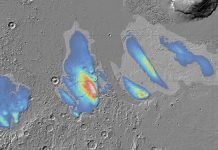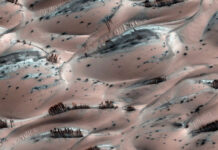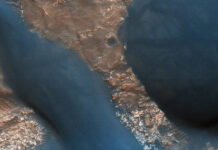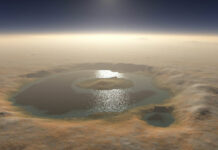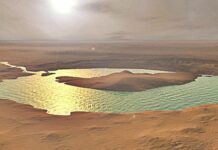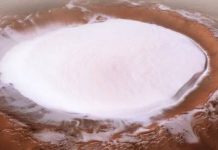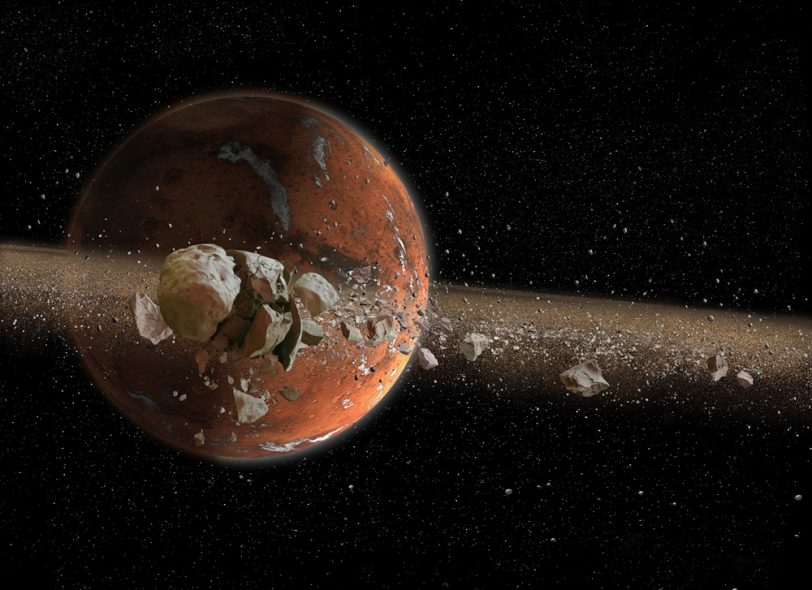
Phobos, it seems, will not live long in the Universe — at least not on a large cosmic timescale.
Astronomers have long suspected that Phobos, the larger and closer of Mars’ two moons, is slowly spiraling inward to eventual destruction. The end result won’t be pretty: Phobos will get closer and closer to Mars, eventually colliding with a gravitational line where the planet’s tidal forces will be strong enough to rip it apart. The rubble pile-like moon will shatter into smaller boulders, rocks, and dust as it orbits Mars.
Mars will join the gas giants in having a spectacular feature: a ring system.
It could be in 25 million years. It is possible that it will take up to 75 million years. Recent discoveries about the composition and density of the little moon, on the other hand, make it far more likely that its death dive will occur sooner. The pieces that do not form a ring will fall to the surface, smashing with enough force to leave new craters on Mars.
“A lot of planetary science focuses on what happened in the past and what’s happening now,” says planetary scientist Benjamin A. Black. “It’s not often that we look at the future, at what will happen.” Black, a City University of New York professor, and graduate student Tushar Mittal from the University of California, Berkeley, have carried out a detailed examination of the eventual fate of Phobos.
It appears that the process of unraveling at the seams has already begun. Images of Phobos taken by the Viking orbiters and other spacecraft reveal a network of grooves on the surface of the tiny moon. They appeared to radiate from near Stickney Crater at first, and geologists assumed the grooves were cracks caused by the ancient impact. Some are, without a doubt, but not all. Terry Hurford of NASA’s Goddard Space Flight Center and his colleagues published a new analysis of the grooves in 2015. The majority of them actually emanate from the side of Phobos that is always facing Mars; tidal forces caused by Mars’ gravitational pull are deforming Phobos. Hurford believes the grooves are stretch marks, a visible manifestation of the moon’s inexorable grip on tidal forces.
Of course, the future martian ring will not be the only one in the solar system. It won’t be the only ring whose existence is dependent on the moon. The four dusty rings of Jupiter, Uranus’ 13 dark, thin rings, and Neptune’s five faint rings and four enigmatic ring arcs are all intimately linked to moons and moonlets, just like the future ring around Mars. And of course, the most familiar ringed planet is Saturn, whose icy surrounding matter can be seen even through a small telescope.
Saturn’s magnificent rings
In 1610, Galileo Galilei observed what turned out to be Saturn’s spectacular ring system. (He described the features as resembling ears or handles.) It wasn’t until 1655, however, that Christiaan Huygens recognized them as an entire system of icy rings. Famous physicist James Clerk Maxwell demonstrated in 1856 that the rings must be made up of a massive number of tiny particles (dubbed “brick-bats”), each orbiting Saturn independently.
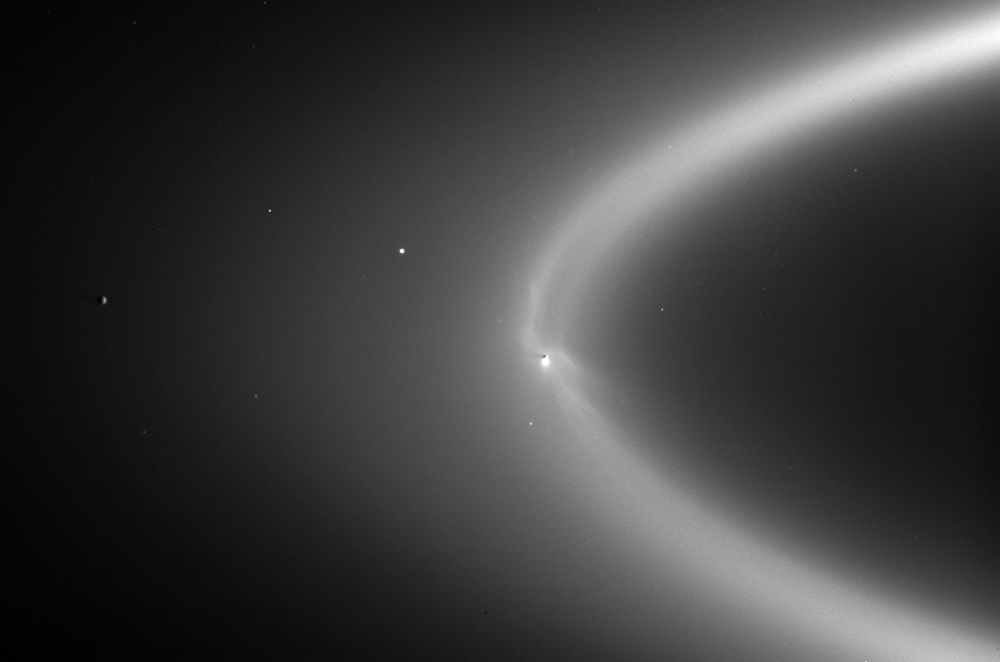
Since then, scientists have disagreed about the origin, age, and composition of Saturn’s rings. Are they leftovers from Saturn’s formation, or the remains of a shattered moon? Is it as old as Saturn itself, or is it a relatively recent addition? And why is there so much ice? Robin M. Canup, a planetary scientist at the Southwest Research Institute in Boulder, Colorado, recently published a proposal that answers these questions. Canup proposes that Saturn’s rings are the very old remains of a Titan-sized moon.
“Saturn originally had multiple massive moons like Jupiter,” says Canup. “The existence of Saturn’s much more massive ring system is linked to Saturn having lost its large primordial inner moons,” Canup explains. “Jupiter retained its large inner moons, [while] its dusty ring system is vastly less massive than the ring system at Saturn.”
Creating a martian ring
Although Phobos isn’t nearly the size of a planet, many of the same mechanisms will drive its destruction. Deimos, its companion moon, is about 7.8 miles (12.6 kilometers) in diameter and orbits Mars at an average distance of 14,580 miles (23,460 kilometers), far enough away to avoid the fate of Phobos. Phobos has a diameter of 13.8 miles (22.2 kilometers). It circles the planet at an average distance of 5,827 miles (9,377km). With an orbital period of just 7 hours, 39.2 minutes, Phobos is one of only 18 of the 181 known moons in the solar system whose orbital period is less than its planet’s rotation period.
That’s one of a few reasons why Phobos is doomed. “There are four factors in action,” explains Mittal. “The tidal force of Mars; the centrifugal forces on Phobos, which is rotating; the gravity of Phobos; and the strength of Phobos. There’s a balance among these. Tidal and rotational stresses act to pull Phobos apart; self-gravity and [tensile] strength act to hold Phobos together.”
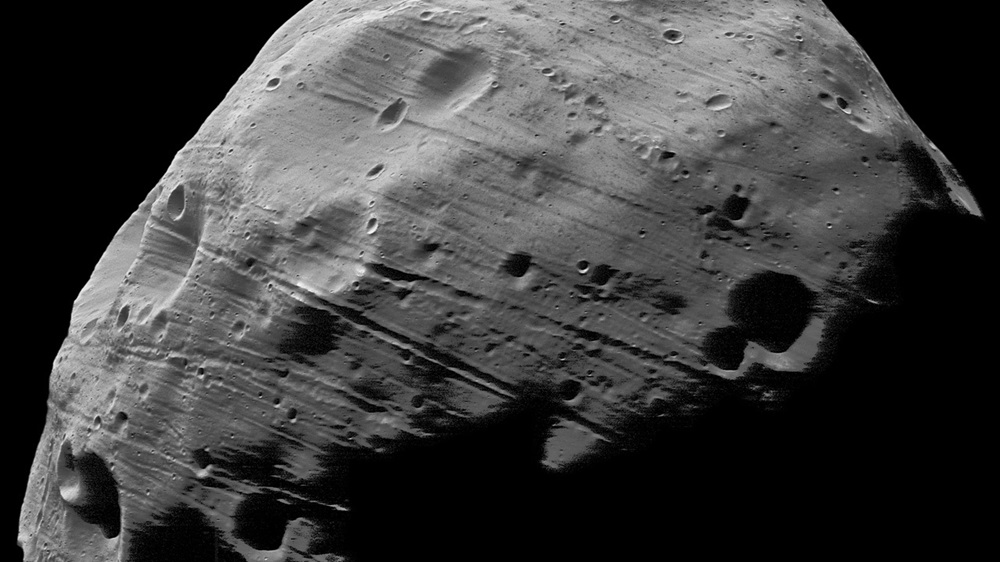
“As Phobos gets closer to Mars,” says Mittal, “the tidal stresses increase.” The moon’s self-gravity and tensile strength oppose the tidal forces, but eventually Phobos will drop to a distance — called the Roche limit — where the martian gravity will win the tug-of-war. Several studies confirm that Phobos’ inward spiral will lead to its destruction in 25 million to 75 million years.
If Phobos were a dense body capable of resisting gravity’s pull beyond the Roche limit, it might be able to avoid obliteration. Unfortunately, data from the European Space Agency’s Mars Express orbiter reveal that the density of the moon is only 1.9 grams per cubic centimeter. In comparison, the density of our Moon is 3.3g per cubic centimeter. Even Themisto, Jupiter’s smallest regular moon, with a diameter of only 4.9 miles (8km), has an estimated density of about 2.6g per cubic centimeter. Mars Express also discovered that Phobos is porous, with likely large voids, implying that it is a rubble pile, similar to many of Uranus’ and Neptune’s tiny moons.
Tidal forces will begin to pull Phobos apart as it approaches its Roche limit, approximately 3,400 miles (5,470 km) from the martian surface. Just as Saturn’s tidal forces may have stripped the icy mantle of a Titan-sized moon billions of years ago, the hundred meters or so of regolith on Phobos will be stripped away. It will happen quickly: in as little as a week, the dust will form a ring around Mars, obliterating the moon.
Depending on how much material is stripped from Phobos, the ring may have a mass density similar to that of Saturn’s rings today. The martian ring will be very dark, similar to Jupiter’s dusty rings, which are darker, thinner, and more diffuse than Saturn’s bright icy rings. It will practically hug Mars, coming closer to the planet than any other ring in the solar system. And, according to Black and Mittal, the ring will not last long; its lifetime is estimated to be between 1 million and 100 million years.
The rocky rubble left behind will eventually meet a quicker but equally dramatic end. It will hit the surface of Mars along slanted paths, leaving a string of elongated craters along the planet’s equator.
Other once and future rings
There is no evidence that either Mercury or Venus ever had ring systems. Earth did, however, for a very brief period during the Moon’s formation 4.5 billion years ago, when our planet was struck by a Mars-sized body known as Theia. Theia merged with Earth to a large extent, but the “Big Splash” would have blown the remaining material into space. According to computer simulations, about 20% of Theia’s mass would have formed a ring in orbit around Earth. Approximately 10% of the ring’s material quickly coalesced into the Moon, with the remainder eventually falling back to Earth. The ring would not have lasted long, possibly as little as a month but no more than 100 years.
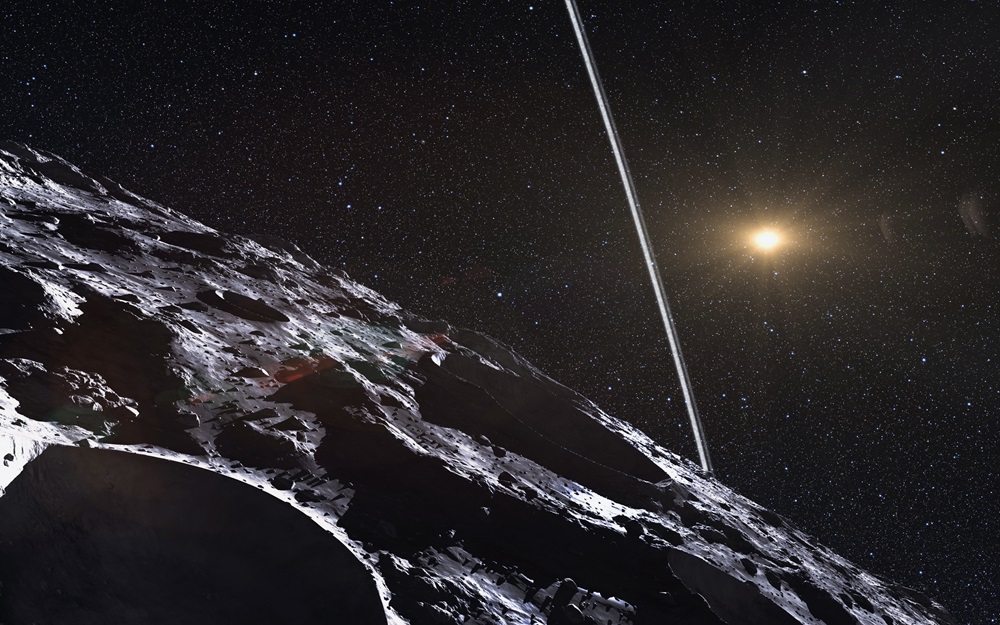
ESO/L. Calçada/Nick Risinger
Surprisingly, according to astronomer Lee Anne Willson, university professor emerita at Iowa State University, our Moon could end as it began. As part of her research on the fate of Earth as the Sun expands into a red giant, she found that the Moon stood a chance of becoming a ring around Earth.
The Moon is receding from Earth at about 1.6 inches (4cm) per year. If left unchecked, the Moon will eventually migrate to a distance that will require 47 days to orbit Earth. By then, Earth’s rotation also will have slowed to 47 days. The two will then keep the same face to each other, as Pluto and its moon Charon do today.
Before this happens, though, some 5 billion years from now, the Sun will enter its red giant phase. It will begin to grow in size, eventually swallowing Mercury and Venus. Drag forces will cause the Moon’s orbit to decay as the Earth-Moon system orbits through the Sun’s expanded outer atmosphere. The Sun will most likely continue to expand, destroying both Earth and the Moon. If, on the other hand, the Sun loses about 20% of its mass first, the Moon will continue to spiral down to its Roche limit. Tidal forces will rip it apart, just as they will destroy Phobos.
And then, 9 billion years after the Moon’s birth from a ring of molten impact ejecta, and nearly 5 billion years after the birth and death of the ring around Mars, Earth will once again have a ring.
